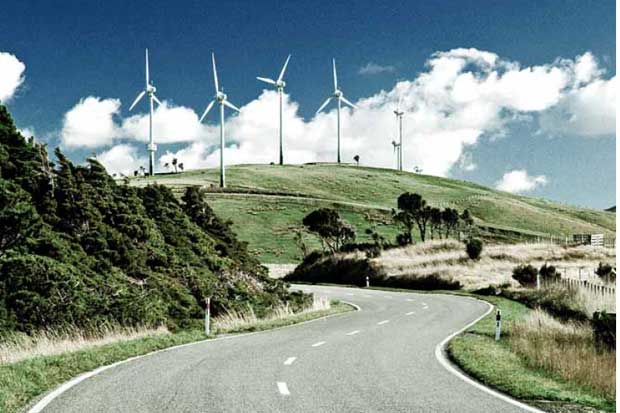A deal on the Renewable Energy Target could come within weeks after the federal government indicated this morning it is willing to back down on a demand the scheme be subject to biannual reviews.
The development has been welcomed by industry, which has seen investment collapse by nearly 90 per cent since the Abbott government recruited self-professed climate sceptic Dick Warburton to head a review in February last year.
“It’s the reviews that have really killed the industry over the last couple of years,” said Russell Marsh, Director of Policy at the Clean Energy Council.
The council, supported by Labor and the Greens, had last week dismissed continuing reviews as a “deal breaker” after the government met with the Opposition and made an offer to break the deadlock over the target.
At the meeting, the government changed its position on the target, announcing it would agree to set the amount of electricity that must be sourced from renewables by 2020 at 33,000 gigawatt hours (GWh).
The target was established at 41,000 GWh with tri-partisan support in 2009, but industry is willing to accept the Abbott government's cut to 33,000GWh so as to maintain bipartisan support, which will help calm investors’ nerves.
“It’s really only having the legislation locked away and changed that you’ll see investor certainty returning,” Marsh said.
Reacting to this morning’s news Kane Thornton, the Chief Executive Officer of the Clean Energy Council, said he’s “now confident that a final agreement can be negotiated, which will deliver the necessary bipartisan support for the RET, restoring stability to the policy and allowing the industry to meet the revised target”.
“It has been a tough 15 months, but this development will be a huge weight off the shoulders of the 20,000 people working in the industry,” Thornton said.

Labor has not yet responded to the government’s changed stance. While it will welcome the government’s decision to drop the reviews, another “red herring” could still derail a deal.
Last time the government met with Labor to discuss the RET it also demanded that native forest wood waste, which was delisted by the Greens and Labor in 2011, be reclassified as a renewable energy source.
Labor remains opposed to including wood waste but it has generally followed the industry’s lead in negotiations, and while the Clean Energy Council also opposes the reclassification, it is urging politicians to focus on the big picture.
“They should get on with the job of getting the legislation passed and not let those other minor details (in the scheme of things) get tangled up in the process,” Marsh said.
The compromise on reviews could see new legislation introduced before parliament breaks for winter recess on June 25, and Thornton remains hopeful “the major parties will continue to work through this issue for the good of the tens of thousands of people employed by the renewable energy industry”.
Environmental groups, however, have argued that including native wood waste would undermine the effectiveness of the RET.
“The regime would be a hell of a lot more certain if native wood waste was excluded from it,” the Climate Council’s Andrew Stock said.
“In the short run – 20 or 30 years – while the trees are replanted and establish themselves, you’re probably net adding to emissions because you’re burning trees that have been there for 50 to a 100 years,” Stock said.
“And if the power station isn't right next to a sawmill or something the costs and the emissions associated with the transport of the wood waste is an additional emission.”
“It is clear there is a serious intention to proceed with forest furnaces,” said Peg Putt, Chief Executive Officer of Markets For Change.
“Large greenhouse gas emissions result from burning native forest wood,” she said.
“If it proceeded then energy from native forest biomass would be at a scale that would reduce the proportion of the RET available to wind and solar, undermining these genuinely clean energy sources.
“Don’t believe last minute protestations from a forest industry desperate for their next source of public subsidy.”
Eastern Australia was recently listed as a deforestation hotspots by a World Wildlife Fund report which said that 11 global hotspots will account for 80 per cent of global forest loss by 2030.
Between three and six million hectares of rainforest and temperate forest, mainly stretching across New South Wales and Queensland, could be lost if current trends continue between 2010 and 2030, the report said.
The Australian Conservation Foundation has also highlighted the importance of retaining forests in a bid to head of the government’s wood waste plans, arguing that “leaving these forests standing contributes much more to the effort to tackle climate change than chopping them down and burning them”.
“Australia’s native forests contain around 13,067 million tonnes of carbon, close to 24 times our annual national emissions profile,” a spokesperson said.
“The carbon they hold, if burned, will simply add to greenhouse emissions and undermine other renewable energy sources.”
Donate To New Matilda
New Matilda is a small, independent media outlet. We survive through reader contributions, and never losing a lawsuit. If you got something from this article, giving something back helps us to continue speaking truth to power. Every little bit counts.



